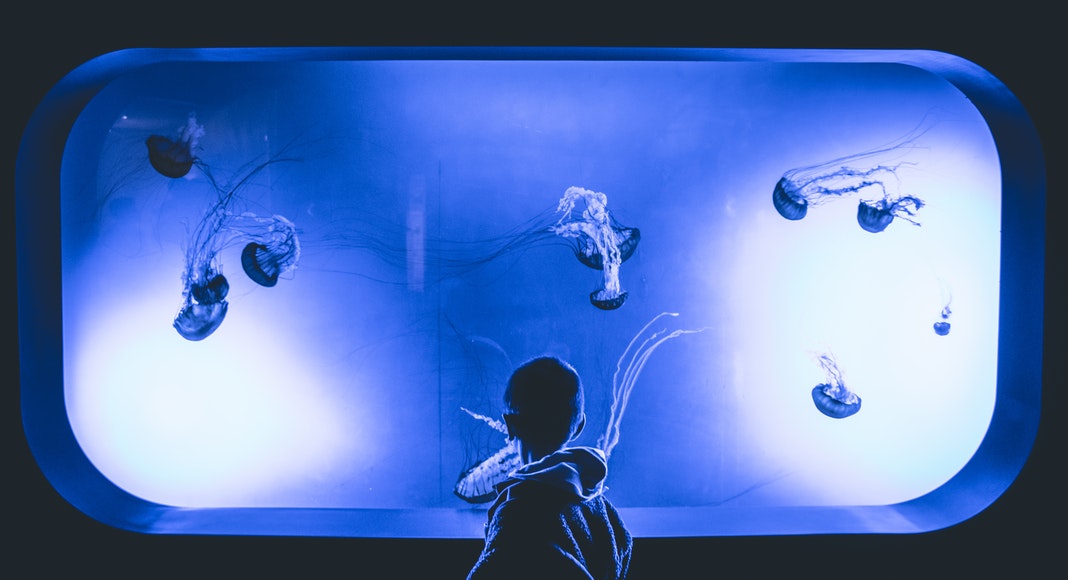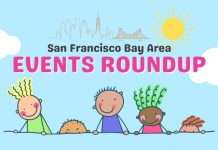 Last week, my kids and I walked through the doors of the California Academy of Sciences for the first time in eight months. My kids were bubbling over, too excited to decide where they wanted to go first. “Let’s go see Claude!” “Let’s visit the jellyfish!” “Look mom, a stingray!” We had spent the past eight months anticipating this moment. During the early days of quarantine, we visited the museum grounds often. Eating snacks on the steps and wondering what the penguins were doing without us. Leaving notes for the fairies who live on the museum lawn. Biking by the museum and waving at all the fish inside.
Last week, my kids and I walked through the doors of the California Academy of Sciences for the first time in eight months. My kids were bubbling over, too excited to decide where they wanted to go first. “Let’s go see Claude!” “Let’s visit the jellyfish!” “Look mom, a stingray!” We had spent the past eight months anticipating this moment. During the early days of quarantine, we visited the museum grounds often. Eating snacks on the steps and wondering what the penguins were doing without us. Leaving notes for the fairies who live on the museum lawn. Biking by the museum and waving at all the fish inside.
It seems absurd in retrospect, but the moment I realized that the COVID-19 pandemic was going to fundamentally change my children’s lives was when I found out the California Academy of Sciences was temporarily closed. Cal Academy is not just another museum to us. It is our museum. Since they began talking, when my children said the word “museum,” they meant the California Academy of Sciences. I grew up in Chicago, where the Field Museum played that role in my life. When I became a parent, I wanted my kids to have a museum that belonged to them, a museum they knew.
Before the COVID-19 pandemic, we visited the Academy of Sciences at least twice a month. My kids knew their way around. My daughter Hazel liked to develop a plan ahead of time of what they would do. Upon arrival, we always liked to say hi to Claude, the albino alligator, and his sea turtle friends. We usually went to the children’s play area next, and did a craft if one was available. We stopped to watch every science experiment, even the ones we had seen before. If there was a chance to meet a snake, we would stop whatever they were doing to meet one. Upon arriving at the museum, we made special notes of the puppet show times and would race across the museum so we didn’t miss them. We always made sure to run through the fog room, opening our mouths to let the cold fog into our lungs. As Pacifica kids, I found it hilarious that they still thought of fog as a novelty. Less frequently, we would venture upstairs if we needed a change of pace or something fun to explore. And we would always, without fail, spend at least an hour in the aquarium.
When my daughter Hazel was four, she began saying she wanted to be a scientist when she grew up. At age six, she is now more specific. Hazel wants to grow up to “study magic in the ocean.” Hazel and her brother love everything about oceans. I attribute their love for the ocean in part to the Academy. They have spent endless hours watching colorful fish swim around glistening tanks at the Academy of Sciences. Fingers pressed to the glass, giving underwater high fives to Academy scuba divers. Touching starfish legs with two fingers. Trying to tell sea dragons apart from the sea-dragon-shaped leaves in their tank.
The pandemic has taught us one things: you don’t know what you have until it’s gone. I hadn’t understood how much the Academy had shaped my children’s lives until it was closed. That day in October when we were finally welcomed back, I got choked up thinking of the emotional importance this museum holds for me as a parent. The pandemic gives us so much to grieve, that sometimes it feels impossible to grieve just one thing, particularly something seemingly unessential like a science museum.
And yet our science museums are not unessential. The Academy has taught them endless animal and science facts. But it has also taught less tangible lessons about inquiry and exploration; about stewardship and the importance of taking care of one another and the planet we live in. If anything, these last eight months have shown us how essential science is to our existence. The Academy of Sciences has shaped my children’s lives. The Academy has reopened, but it is not the same place it once was. It has reopened shyly, tentatively. During this difficult year filled with endless heartache, the ability to reopen museums, even minimally is a shark of hope. We cannot let our museums down. We need them. For our present, but more importantly, for our children’s futures.




















